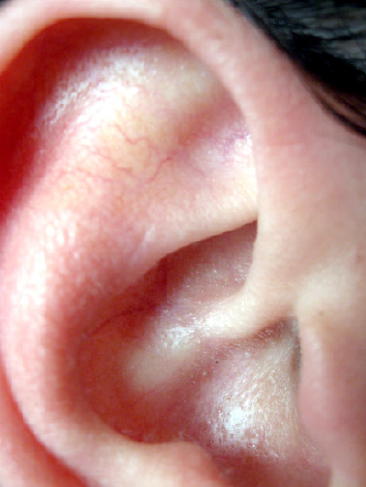-
- 02
Jun - (0)
Say It With Pictures…
I heard from a fellow in The Netherlands recently, Erwin van der Hout, who has an intriguing product on the market to facilitate better, more constant communication between consumers and professionals. iPicto is an app for the iPhone that enables these folks to communicate via pictograms.

It turns out that folks diagnosed with dementia, autism, and Asperger Syndrome type memory/brain disorders warm up quite nicely to communicating with pictograms, and iPicto seems to be a good tool for this application. I guess the value in this type of communication tool has been known for quite some time. Van der Hout’s product delivers hundreds of expressive pictograms literally to the user’s fingertips, since they hit the iPhone, and the app enables selection of the pictograms for Email communications. In our Email Interview, van der Hout shared that his research indicates success in using pictograms for communications of this type not only in clinical environments, but also for parent/child communications…the books on his website were not in English, and I’m challenged that way, so I can’t personally back him up in this matter. Perhaps if you can read in German, you can check out the link above to his website and comment on his references to help clarify this.
In spite of how that may sound, I’m all for better communication, as long as it meets the patient information security rules we need to live by. Pictogram communication could be quite effective for people with serious mental health issues, and ultimately make a number of people’s lives happier. The pictogram libraries would be uploaded to the iPhone and iPad, and since there are hundreds, they could prove quite expressive and improve such communications between professionals and consumers.
iPicto on the iPad enables storage of larger pictograms, and as a layman, I could envision using this technology in treatment sessions.
Of course, as with any good idea, kinks need to be worked out. Wouldn’t the pictogram Emails look interesting in the consumer’s Electronic Health Record (EHR)? If you save Emails to that system, check out the record to assure the pictogram actually displays once it’s saved…sometimes that sort of thing is lost in the technical translation.
Lately there has been a ton of buzz about apps for your SmartPhone, and recently I shared that it’s getting easier to find apps and methods to increase security on the SmartPhone. I’ve made other excursions into this world, discovering ACHESS, an app for addiction treatment for which the manufacturer shared their security measures, and after talking with the ACHESS manufacturer, the security seemed good for our purposes. The industry is taking steps, and is closer to secure communications between consumers and professionals, as required by a number of rules that are ultimately rooted in HIPAA requirements. At this point, if you plan to engage in consumer/professional communications with iPicto, you’ll need to take your own security measures. A number of solutions are cropping up, and security opinions abound. Among all those claims and the new technology, I continue to make the same suggestion: consult a professional prior to sharing consumer data on a SmartiPhone, even if it’s with the consumer.
Read more → - 02
-
- 23
May - (0)
Is My Health Record Safe?
Crime runs rampant! If a hacker has my health information, chances are high they can get yours, too. Frankly, if they have mine, I find that less disconcerting than somebody having access to my credit card and bank accounts. Perhaps if I were a senator or a member of the president’s cabinet, I might feel differently…as you may feel also. I may not care who knows I have three stents in my heart or that I have a history of being treated for anxiety. That senator or cabinet member, however, may have a very unpopular disorder and want that knowledge guarded zealously.

The idea behind hacking computers to get data is to turn it into money, and people are pulling down big bucks for sharing certain data with certain people! Apparently, holding data hostage is getting to be a popular pastime these days. I ran across a bundle of opinions about what the future holds recently in Healthcare Technology News for we who are interested in Electronic Medical Records (EHRs), and the article on healthcare hacking by Mark Kadrich set my imagination wandering. How can we improve security to healthcare systems?
In this industry, we need to make no mistake about it, consumers’ health information need to be secure, and it’s the professional’s responsibility to make sure security measures are in play…their tools are stringent password security and all that magic software that runs in the background to keep hackers out of systems. Electronic Health Record (EHR) software is currently regulated by some pretty stringent laws, and I’ve thought we had done pretty well in guarding healthcare data against hackers. HIPAA, data encryption, complicated schemes for patient Release of Information (ROI) and other measures combine into quite a net of security, right?
One hospital I worked with required me to negotiate three different security systems to get to the database I needed to work on. Even with all those levels in place, they recently suffered a virus attack that took a couple months to recover from. The good news is that from the recovery, they ended up with better EHR protection. It was, however, quite an expensive way to earn wisdom. A visit from a security expert and a system security tuneup might be a better solution. It pays to hire the professional, and a couple years ago a friend of mine graduated from a professional education program as an expert in system security; it’s a very specialized and valuable vocation…he got a job within weeks of graduating, and earns his tremendously increased salary
Healthcare Professionals are being encouraged to protect their consumers’ data with yet more security measures, even to the PC level and for SmartPhones. There are a ton of solutions out there. Without a careful analysis of your needs, what’s been effective and ineffective, which companies have a good track record of improving their products when a customer’s data is compromised, and a number of factors, who can say what’s best for you? The salesperson? Perhaps.
I am occasionally put in the uncomfortable position of recommending products and services like this, and frankly, I recoil as from a hot flame…there are plenty of security experts out there (like my friend), so I bring one of them into the equation. Technology changes by the minute, and I have enough work to do keeping tabs on EHR products and development. It’s like laundry…I hire a professional because if I handle it myself, I’m bound to end up with an irremovable stain.
Read more → - 23
-
- 17
May - (0)
HIT’s Been Good To Me, Oh Yeah!
From the title of this, you might expect a Joe Walsh parody piece this week, but no, “Life’s Been Good To Me” was a hilarious tune I doubt I can match.
I recently received a note from a fellow asking for some advice about getting into the Healthcare Information Technology (HIT) field. Naturally, I had some advice, and considering high unemployment, I thought others might be looking for the same career path. This fellow was in his late 30’s, starting a family, and opening himself up for a ton of work that needs to be tended to quickly. That said, it’s not too late to take a couple years to prepare and get started in this business at 40, as long as you pay attention to some of the basics: Building and networking with industry contacts, education, and building an entrepreneur spirit. Also, a background in either
 general IT or healthcare doesn’t hurt. Starting at 40 gives you a career of over 25 years in the field, and few people are retiring at 65 these days; you could do well for yourself following this path.
general IT or healthcare doesn’t hurt. Starting at 40 gives you a career of over 25 years in the field, and few people are retiring at 65 these days; you could do well for yourself following this path.HIT is exploding, much of the growth directly attributable to ARRA funding and related ultimately to the National Health Record and wider adoption of the Electronic Health Record (EHR), especially in mental health and substance abuse treatment. I think it’s a great place to be working.
If you’re a consumer who wants to understand yourself better, and you think you could function well in the work environment in which you’re seeking help, what better way to do that than immerse yourself hip-deep in the industry?
If you’re a professional seeking to get ahead in the industry, what better way than to move into the future now, gaining the knowledge and experience you’ll need to become more valuable to the organization you work for (or others!)?
Here are some things to think about: Education: Look into IT security certificates (some colleges offer courses). Sharing health data has to meet quite strict rules involving user security, encryption and such, and it looks Impressive on the resume. If you want to work for a hospital or mental health and addictions treatment organization, some healthcare education & experience is almost always desirable. Look into a nursing program or other professional degree. A Master of Social Work can be a two year program with the only per-requisite being almost any old Bachelor’s Degree. Many people go the night school route for this. As you get acquainted in the industry, you’ll find programs looking for interns, sometimes paying you to earn the experience required to complete the MSW program. It’s a lot of work, and most people resign themselves to a couple years of poverty, with the dedication of an entrepreneur to move forward into this field. The combination of IT and clinical/medical expertise and credentialing is almost too good to be true in this industry.
Consulting is a great gig, and I love running my small business, however, you have to wear a lot of hats; I’ve had to leverage my marketing and advertising experience, my IT experience, my experience working in mental health and addictions treatment environments to grow my business from an idea to a tidy little affair. It’s good to network with people in the industry. Reach out to facilities in your community, do some volunteer work, become known in the industry, not just to practitioners, but to management and owners of the organizations you’d like to work for. That’s not to say you should give away the farm, just that in order to get a little love, you gotta give a little love. Don’t sell them. Help them and get to know them. You can sell others down the line once you’re reasonably well known. It takes work, but the combination of education & healthcare experience will build a solid foundation you can build a business on. Seek mentors. Hang out with smart people and hope it rubs off. Get interested in their issues and how these successful people solve them.
As a final tip, the hot place to seek HIT work right now is App development for SmartPhones. You don’t need a degree (I’m not sure any are available yet!) and as long as you are confident in building a network of industry friends and have adequate selling skills, this could build a nice side business that could grow into something big. Just think outside the box and develop from the user’s point of view.
I’ve been working in HIT for a long time, and it’s been good to me…the way to know if it can be as good to you is to take the first step…call an educational program to gain some IT or clinical knowledge, call a mental health or addictions treatment organization and volunteer to get to know the layout of the industry. The important thing is to get started, so get on Google for some numbers and pick up the phone!
Read more → - 17
-
- 12
May - (0)
When Some People Talk
Yes, I actually try to listen. Sometimes.
Richard Blumenthal is one of the folks I listen to when he speak because he’s the National Coordinator of HIT and impacts my interests and business. I ran across his opinions recently in Healthcare Technology News and I couldn’t resist commenting, since the opinions revolve around trends in healthcare IT.

Blumenthal feels ARRA’s IT aims are being met. At the risk of repeating myself, I tend to agree. The Electronic Health Record (EHR) has used all the attention to spring out of the gate with increasing sales of software due to the incentives offered Behavioral Health lags behind, but see my last post to understand why I feel Mental Health and Substance Abuse Treatment will soon catch up with the rest of healthcare IT.
Lately, my work has led me to help organizations who have never fully implemented their EHR, which was purchased years ago. They are finding themselves realizing the benefits they originally purchased the system for, much later than expected. Scheduling is working better for professionals, there are shorter wait times for consumers, and management is getting figures they need to project how they need to do business in the short-term and into the future. The value of the EHR is coming to the forefront.
Implementation of the software was originally not accomplished due to a number of factors, not the least of which was the inability to foresee that a software implementation would take as much effort on the parts of the employees as it did. This led to inefficiencies in the implementation effort like having to re-train some staff members in the mission critical efforts (usually those affecting billing or the largest piece of revenue). In short, when the implementation dollars were spent, the project stalled and a bundle of software features like scheduling, assessments, treatment plans and progress notes never made it into daily life at the organization. The vendor and the customer often came to an impasse that so adversely affected their business relationship that the EHR was never implemented. What this meant to the consumer was about a year and a half of disorganization for people supposed to be helping them. In some cases there were ever-increasing delays in getting needed treatment, which led to no-shows, resulting in poorer service to customers and some people not getting the help they need at all.
Another barrier to implementation has been acceptance by doctors. Usually they just didn’t want to slow down to learn how to use the software…in some cases, the software wasn’t designed with their workflow process in mind. These days more and more doctors are being drawn into using the EHR by their peers. I’ve seen this happen in the field, and many doctors using the EHR love it. Some wait to retire, never learning to use the software. I find the same pressures to use the EHR come to bear throughout a Mental Health or Substance Abuse Treatment environment…Nurses, counselors, administrators, even executives are feeling the peer pressure and learning the systems.
In some cases, this shift requires a new software purchase and implementation. Folks discovered the vendors are better at that job these days, and staff is more accepting of the change. In other instances, staff has been so impacted by The Internet and home computer use (Facebook and Email are really big hits with all demographics), they are more accepting of the EHR and learn how to use it more quickly.
So, a psychological change is under way in organizations in this sector. People are more accepting of technological change these days, and a few are even enthusiastic. The EHR is spreading, and the results are helping consumers, professionals and helping organizations.
Read more → - 12
-
- 02
May - (0)
Big Bucks
In 2010, the Electronic Medical Record (EMR) market grew $15.7 Billion. Naturally, only a small portion of that was wrapped up in mental health and substance abuse treatment provider upgrades to their systems, but the figure foreshadows good things to come in this sector of healthcare.
 If anybody doubts the effectiveness of pumping up the economy through healthcare over the past couple years with ARRA funds, think about $15.7 Billion in growth for the tiny offshoot healthcare market for the EMR. A lot of babies got shoes and rents got paid in the industry I hold dear due to ARRA.
If anybody doubts the effectiveness of pumping up the economy through healthcare over the past couple years with ARRA funds, think about $15.7 Billion in growth for the tiny offshoot healthcare market for the EMR. A lot of babies got shoes and rents got paid in the industry I hold dear due to ARRA.Even though the economy was growing slowly, we can speculate that the Meaningful Use incentives that result in a Medicare or Medicaid “bonus” just for using computers to track a consumer’s records helps explain the sudden growth in healthcare providers selecting new or upgrading their software.
Electronic Health Records (EHRs) are only slightly different from EMRs, so I generally talk about the EHR. An EHR includes the EMR, and extends that with capabilities to reach out to other systems of many sorts and share data. The EMR (at least when the distinction was first made) is strictly internal…but this is trivia.
The reason I speculate upcoming growth in adoption of the EHR in mental health and substance abuse treatment is simply because soon more organizations will be eligible to collect Meaningful Use incentives. Currently, behavioral health (for this conversation, include “mental health” in that term), is left out of the Meaningful Use incentives, so incentives must be sought by a professional, which means a prescribing doctor like a psychiatrist. This reduces the amount of funding that can be secured in this field.
Right now, mental health and substance abuse treatment facilities are represented in the effort on Capitol Hill to include them in the Meaningful Use incentive program Recently the bill moved from the House where it languished in committee not too terribly long, advancing to the Senate. So, it’s a few months away, but the result when this bill passes will be an upsurge in EHR implementations for mental health and substance abuse treatment organizations. Professionals who have been waiting for an updated electronic record to keep their assessments, treatment plans and progress notes will be pleasantly surprised when they see the new features that have become commonplace in the EHR.
Central Scheduling will be compliant with rules and regulations. This may not be a counselor’s dream, but it certainly enables increased efficiency and decreases the time a consumer may have to wait to get help.
Communications about a patient’s treatment will be spread throughout the treatment team without having to use “secret code” for patient information in Emails that might make it to the outside world. Emerging issues can be dealt with quickly on a team, because the team is better coordinated without having to go to a paper chart to learn what the rest of the team is up to.
A ton of software features have come into being over the past few years, and with this influx of funds into EHR manufacturer’s pockets, even more wonderful advancements like Smart Phone use that are cutting edge will become commonplace. All this courtesy of Meaningful Use incentives. It took a while, but the plan’s coming together.
Read more → - 02
-
- 25
Apr - (0)
The “As-Is” EHR
A highly placed woman in a major New York City social services agency impressed me with her wisdom recently. She said that she didn’t want to have a committee build an Electronic Health Record (EHR) from scratch, even though that’s possible with the software the agency selected. The facilities would use whatever came from the software manufacturer wherever possible. During the purchase process, she had seen that the vendor had fine-tuned solid functionality over the course of many years and the result was a pretty good product even though some of her staff might want it to operate a little differently.

EHR software is generally manufactured with a number of workflows in mind, and some software can be modified to work virtually any way the staff wants to use it. These days the difficulty can be in where to draw the line and accept what the vendor suggests.
In this age of screen and functionality design tools and report writers that moderately tech-savvy professionals can use, this was the voice of experience speaking: too much design slows the EHR implementation process and can detract from consumer service. If treatment professionals on a software implementation team are obsessing about adding data elements, logic and reports to the system, they spend less time focusing on the mission of the facility they work for: serving the consumer.
Here’s how report writers and customization tools pay off: A lot of consumers depend on government and charitable funding to get the help they need. Sometimes these funding sources are not used by many professionals or treatment facilities, so software vendors will charge extra to meet reporting needs that facilitate getting paid…everybody needs to buy shoes, and the vendor’s development option may be quite expensive. A design tool or report writer in the right hands may be able to produce what’s needed at a fraction of the vendor cost in order to assure a consumer’s services are paid for.
So, this is the dilemma. Many software products include tools delivered to make at least minor modifications to EHR software’s “out of the box functionality”. Most treatment organizations keep their professional staff busy helping consumers, so they’re not the ones to be using those tools. The simple solution to getting needed functionality on line is to hire an EHR professional, who does this sort of work for a living, cheaper than the vendor. These folks are certainly available, and as long as they have guidance from both the executive and professional levels, they can usually help minimize disruption of services to consumers during and beyond software implementation. It’s also in the interest of minimizing disruption and getting the EHR functioning in a reasonable amount of time that an agency should consider using as much “out of the box” software functionality as possible. For the minor changes (adding a data field, modifying a screen or writing a report), the design tools and report writers come in mighty handy and avoid future development fees.
When an agency purchases an EHR, it makes sense to assure it comes with a flexible, powerful design tool. Sometimes work flows change, and management seems to forever be asking for more information displayed in a different manner to meet some requirement or another. Two years down the line, new fields or even an entire form may be needed to meet the need for only a few people to do the input, and fewer people to see the reports. The financial reward of the new features or functionality may not justify what a vendor charges; a person on-staff or consultant who knows the built-in design tools can limit the new fields and reports to just the right people if the design tool is good and the EHR security rights comply with current technology standards.
Since mental health and substance abuse treatment professionals should be busy helping consumers, a reliable EHR professional to help with additional functionality needs to be accounted for…both present in the workplace and with a line in the annual budget. Another great thing about purchasing an (EHR) right now is taking advantage of groovy technologies like SmartPhone connections, functionality that forces users to meet the rules of HIPAA, HITECH, and other acts or agencies, and patient access to their own medical records over a secure internet connection. Professionals seeking an EHR need to be cognizant that the bulk of the features and functionality they want comes with the system. Development is expensive and generally takes a long time. So, make sure what you want and need is in the contract, and whatever’s not in the contract can be built with the design tools that come with the system.
Getting the EHR to fit a specific organization’s needs can be an expensive undertaking, and tying together standard elements involved in purchasing and implementation of the software is important down to a very granular level…it’s good to know what you’re getting yourself into.
Read more → - 25
-
- 18
Apr - (0)
What’s Meaningful Use Mean to Me (Pt 3)?
The practical implications for professionals and consumers of meeting Meaningful Use measures with the Electronic Health Record (EHR) can be quite positive. I commented on the first ten of the fifteen measures in the last couple posts, and we’ll explore the balance today.

The measures are intended as a way for the Center for Medicare and Medicaid Services (CMS) to confirm that the EHR is being well-used. Computerizing mental health and substance abuse treatment organizations with software that works also needs to fit into the plan for a national health record with the goal of improving health for all Americans. From a national perspective, communication among healthcare professionals, improving efficiency, effectiveness and increasing outcomes data for research are good results of the effort for a national health record that started so long ago. It’s also important to protect consumers’ privacy; today’s plan for that is pretty effective.
Incentives from Medicaid are over $63,000 per prescriber, reason enough for some professionals’ organizations to seek them.
Here are a few tidbits about practical value of meeting the Meaningful Use measures in your EHR.
11. Clinical Decision Support Rule: This sounds tougher than it is, and the value is simple. For example, if, during an intake, a prospective consumer shares he is suicidal, then it’s a requirement to administer a suicide assessment. If the assessment scores in the danger zone, the treatment organization may set a policy (automated in the EHR) to pay some additional attention to that in the form of increased services. Periodic scores from the same assessment could be output to a report that gauges improvement of the condition. This tracks effectiveness of the rule, which pays off greatly for professionals and consumers alike. If the clinical decisions are not leading to better outcomes, that’s brought to the forefront of attention, and whatever’s not working can be improved.
12. Electronic Copy of Health Information: A few hospitals and mental health treatment agencies have integrated a Consumer Portal into their EHR. This delivers a consumer the information via a secure Internet connection. The major concern is complying with HIPAA security requirements and keeping a consumer’s health information from leaking to others. The portals are designed to securely deliver information like blood or urine test results, problem and medication lists, even medication allergies to the consumer…it’s the consumer’s treatment record, and she’s entitled to it. Naturally, not all treatment organizations will want to maintain a Consumer Portal, and those organizations can elect to provide electronic media to the consumer within three days of the request.
13. Clinical Summaries: Did you ever leave a professional’s office wondering what just happened, and if the money for the treatment was well spent? Clinical Summaries are a written description of what happened in that session’s treatment, whether medications were prescribed, a counseling session occurred, or other service offered by the healthcare professional. The information can be available on the Consumer Portal, however other electronic formats or even a printed copy are acceptable under this measure. Whether or not the money is well spent, you’ll at least know what just went on, and since the information is yours, it’s supposed to be part of the service and not charged.
14. Electronic Exchange of Clinical Information: This is one of my favorite parts of the electronic approach. I abhor filling out duplicate information. It always bugs me when I have to repeat the same information within an organization that’s supposed to be serving me…This measure assures that certain information can be shared not only within an organization, but also among healthcare providers. The consumer controls this sharing of data, and if she doesn’t want certain information shared, it’s supposed to be excluded. A good outcome of this is reduced mistakes, eliminating human keystrokes on the computer and electronic updating of information automatically when a consumer visits a new professional.
15. Protect Electronic Health Information: Consumers deserve privacy, and that’s the outcome of this measure. It’s the consumer’s decision to share information…or not. HIPAA security has been pretty effective and around a while, so this sort of protection is not a reach.
Meaningful Use measures assure EHRs meet standards. From what I’ve seen, the standards are reasonable and carry true benefits for both the consumer and the professional.
Beyond these measures, the next subtopic in this line of thought for me to cover is the Menu Set Measures…but that’s another day.
Read more → - 18
-
- 12
Apr - (0)
What’s Meaningful Use Mean to Me (Pt 2)?
In my last message, the first five measures that provide critical proof of using an Electronic Health Record (EHR) were explored from a different angle, the practical implications for professionals and consumers. There are fifteen of these measures, and we’ll tackle a few more today.

Incentives from Medicaid are over $63,000 per prescriber, and that contributes greatly to offsetting purchase price and ongoing expense of the EHR. Mental Health clinics and Substance Abuse Treatment organizations were left out of the original definition of who could qualify for Meaningful Use incentives, and the solution to that oversight is to use prescribers to qualify, at least for now. Checking the progress of the bill that’s intended to add these healthcare providers to the equation, it’s rocketing through House of Representative committees at the speed of government…a tedious process that requires a lot of lobbying to keep it on the radar.
Here are a few tidbits about measures six through ten:
6. Medication Allergy List: The functionality for this relates back measure 2, Drug Interactions and Allergy Checks. In order for an alert to pop up on the CPOE (Computerized Physician Order Entry), it has to come from somewhere in the software, usually another list (doctors seem to like lists). As with other related measures, professionals and consumers really like avoiding an interaction or allergic symptoms invading a consumer’s day because of an interaction with the medication. Additionally, I remember somewhere in the dim past that medication / allergy interactions can occasionally be fatal. It’s lifesaving technology, and the professionals’ inputting a consumer’s allergies is a fairly simple matter. In most software. Some products I have seen have been more work than it’s worth to use. If you’re shopping for an EHR, check the CPOE out thoroughly to assure it’s easy for the prescribers to use.
7. Record Demographics: Who is this consumer? Where does he live? When was he born? Addressing these questions is a no-brainer; professionals need to know who they’re working with. It’s a pretty inoffensive process to gather the required demographics, and they’re needed in order to bill, and consumers are used to this delay. It goes with the territory, so the software needs to work within the professionals’ process to be effective.
8. Record Vital Signs: Blood pressure, and Body Mass Index (BMI) help the professional recognize and monitor conditions like a weight problem. In Mental Health, it’s probably a casual notation to most professionals, however to the consumer, something like that BMI can be an indication of a body-image problem, and a professional may want to discuss this sort of thing.
9. Record Smoking Status: If the consumer is twelve years old, don’t worry about recording this. For those of us over age 13, however this is a terribly important notation. I have heart disease…how much of that condition was aggravated by my smoking, even though I quit over 17 years ago? I have a pal battling bladder cancer every day; his doctors say that’s a direct result of smoking. OK. That’s enough of me on my soap box. The fact is that smoking is an addiction, and that’s of concern to professionals in this business.
10. Clinical Quality Measures: Is treatment working? In my mind, this is one of the most important things we can do in this field because peoples’ lives improve when treatment is successful. There are a ton of assessments intended to measure treatment outcomes. They’re pretty painless, using radio buttons and check boxes to speed the process and enable improvement tracking on a report. Many of these assessments are intended to be administered multiple times, providing a graph of progress toward a treatment goal. In our field, suicide and other assessments deliver measurements of outcomes. In other areas of healthcare, there are different measurements. (http://www.cms.gov/QualityMeasures/03_ElectronicSpecifications.asp#TopOfPage)
If you’re a professional who wants to take advantage of Meaningful Use incentives, remember that your EHR needs to be certified. A couple of companies have been identified as approved in this effort by the government. (http://www.ihealthbeat.org/features/2010/onc-names-temporary-certification-bodies-for-meaningful-use-program.aspx) Not all EHR vendors have sought and received certification, and usually professionals and the organizations they work for are relying on these vendors to secure certification of their software…so ask them if you don’t know and want to collect Meaningful Use incentives.
I’ll share my take on the final five measures in the very near future.
Read more → - 12
-
- 04
Apr - (0)
What’s Meaningful Use Mean to Me (Pt 1)?
In the Electronic Health Record (EHR) business, we have been pointing professionals and the organizations they work for in the direction of collecting incentives from Medicaid for proving they are effectively using the her. Mental health and substance abuse treatment agencies stand to collect good money for meeting Meaningful Use requirements (over $63,000 per prescriber meeting the requirements).

So what? What’s that mean, how can it be good for the consumer and the professional helping them?
There are fifteen “core measures” to be proven in meeting the requirements and collect the incentive payments. Tackling the first few of them, here’s how they affect both the consumer and the professional. Since the biggest payoff for agencies seeking these incentives appears to be in Medicaid, we’re assuming 30% of a prescriber’s work serves Medicaid patients, and they write over 100 prescriptions in the reporting period.
1. CPOE for Medication Orders: That would be Computerized Physician Order Entry. A prescriber just having the capability to maintain records on the computer keeps a ton of treatment information easily accessible. If a medication’s not working, the record helps prescribers determine whether a dose increase, perhaps another drug, or some other measure will be more helpful. From the consumer’s side, CPOE not only shortens their visit and helps zero in on good medications for their conditions, it also sets the stage to send the prescription to their neighborhood pharmacy, a later requirement that eliminates the need to call in or drop off a prescription and delay picking up the medication they need.
2. Drug Interaction and Allergy Checks: One of the greatest features this functionality delivers is a safety net for prescribing. Alerts are built into most CPOE systems to avoid prescribing multiple medications that interact poorly with one another or might aggravate an allergy, which carries the possibility of undesirable side effects like sickness or death. Both professional and consumer like this idea. After all, prescribers are only human, and oversights or mistakes can be made. These alerts help avoid such problems.
3. Maintain a Problem List: If a professional doesn’t have immediate, up to date information regarding all of a patient’s diagnoses, she doesn’t know what to treat. This hampers development of a treatment plan. If a consumer has a diagnosis of alcoholism and a diagnosis of depression, different treatments apply for the multiple problems, goals and objectives in the treatment plan; conditions can aggravate one another. Past diagnosis’ can recur, so noting a previously resolved issue on the problem list can help a professional make good treatment decisions. Consumers deserve well informed treatment for their problems. If a problem list is intrusive, in the professional’s face, there’s a much higher likelihood of staying focused on treatment goals that are agreed upon between the professional and the consumer.
4. Electronic Prescribing: This is the actual delivery of a prescription to the neighborhood pharmacy mentioned above. This feature lowers liability for professionals because the handwriting problem is eliminated…the right dose of the right medication is assured to be legible with electronic prescribing. This is vital to the continued health of the consumer, and pharmacies like the idea because it decreases time they spend on the phone verifying illegible prescriptions.
5. Active Medication List: Similar to the problem list (professionals seem to have a lot of lists), this list provides an immediate update for a professional of not only the consumer’s current status, but the history…if a medication has been effective or ineffective in the past, it may help, hurt or be a waste of time in the future. A consumer may not remember medications that he’s used in the past, or get the name of a medication wrong that he thought worked well for him (take a look at a list of medication names and you can see it could be easy to make a mistake. The medication list provides an accurate record.
If you’re a professional who wants to take advantage of Meaningful Use incentives, the link cited above delivers the hoops you’ll have to jump through immediately. As far as the EHR goes, check out a few of my previous posts for some valuable tips.
I’ll explain a few more of these elements of a good Electronic Health Record (EHR) in the very near future.
Read more → - 04
-
- 29
Mar - (0)
Crunch Time
It’s crunch time for getting in line to collect Meaningful Use incentives and that can carry a nice payoff or be substantially disruptive, negating most of the intended benefits. Consumers and professionals both to feel the outcomes, both good and “interesting”.

Meaningful Use incentives in mental health and substance abuse treatment mean revenues of over $63,000 per prescribing doctor over the course of five years. If an organization has ten prescribers, they could conceivably pay for an Electronic Health Record (EHR) just out of the incentives.
That’s not where the payoff ends, consumer and professional benefits abound.
A well implemented EHR can improve care simply by delivering the availability of treatment documentation. A lot of agencies treat folks with a team approach. The great benefit of that to the consumer is they get help from specialists in a number of disciplines, and they all know what the rest of the team is doing. If treatment is documented by the line counselor, then the next professional in line, say a psychologist, has a foundation knowledge of what the consumer needs before they go into a session. The psychologist can then refer the consumer to the psychiatrist if medication prescribing is a good idea (also handled electronically so the medication will be waiting at the pharmacy when the consumer gets there). Subsequently, other professionals like nurses and vocational rehabilitation specialists can be involved, and they all know what’s been done before without a team meeting and without picking up the phone, saving time and getting a clear picture with a simple review of the consumer’s EHR.
Agencies who provide care who have effectively implemented the EHR like it because it enables the current staff to help more consumers. Theoretically, better care can be provided to more people by the current staff.
Audits can be easier if the implementation accounts for the needs of the auditors, and at least an internal audit will likely revolve around Meaningful Use incentives. There are also a ton of different government and professional agencies policing consumer care these days, so proving that all of their requirements are met can be a challenge without the ability to sit the auditor at a consumer screen or handing them reports that give them exactly what they want. All this needs to be set up during implementation.
Meaningful Use incentives are offered to assure the effective use of the EHR. By now you’re getting the picture that no matter which software and company an organization of professionals contracts with, the implementation makes the difference between an EHR that’s effective and dismal failure. The agency serving the consumer takes on the responsibility for that effectiveness in deciding to pursue Meaningful Use incentives, using the EHR as a vehicle to help deliver ever-increasing quality of treatment while maximizing efficiency and revenue. Both parties, the agency and their vendor, share responsibility to create a partnership in the interest of a successful implementation. Hesitancy on either end of that equation can lead to a failed implementation, and escape of the desired outcomes.
A number of products out there have matured into solid, well functioning EHRs. Just being able to sell a product that’s compliant with HIPAA and HITECH and meets Meaningful Use incentive requirements is a tremendous feat.
Tons of software companies are striving to enable agencies to meet the first 15 Meaningful Use requirements. For them, the functionality is the thing. Where a lot of software products let shoppers down is the lack of a design tool controlled by the user, cementing the partnership for success. A good design tool these days can make software do pretty much what you want it to do. If it can’t, it’s not a very good tool, is it?
When a shortcoming in a business process that involves the EHR comes to light, the natural tendency for those working with the software is to come up with a better process, which means a change will likely be required in the software. Going to the software manufacturer for programming usually carries a price tag, which agencies want to avoid…it can put the finance folks ill at ease. It’s much better in their eyes to have somebody who’s already collecting a paycheck design the solution to that faulty business process, then implement it, then fine tune it, leading to a resolved problem.
There are ton of details involved in an implementation, and in order to meet requirements for Meaningful Use incentives, fifteen more have been added. Get help.
I’ll talk about these requirements and how they affect both the professional and the consumer soon.
Read more → - 29
